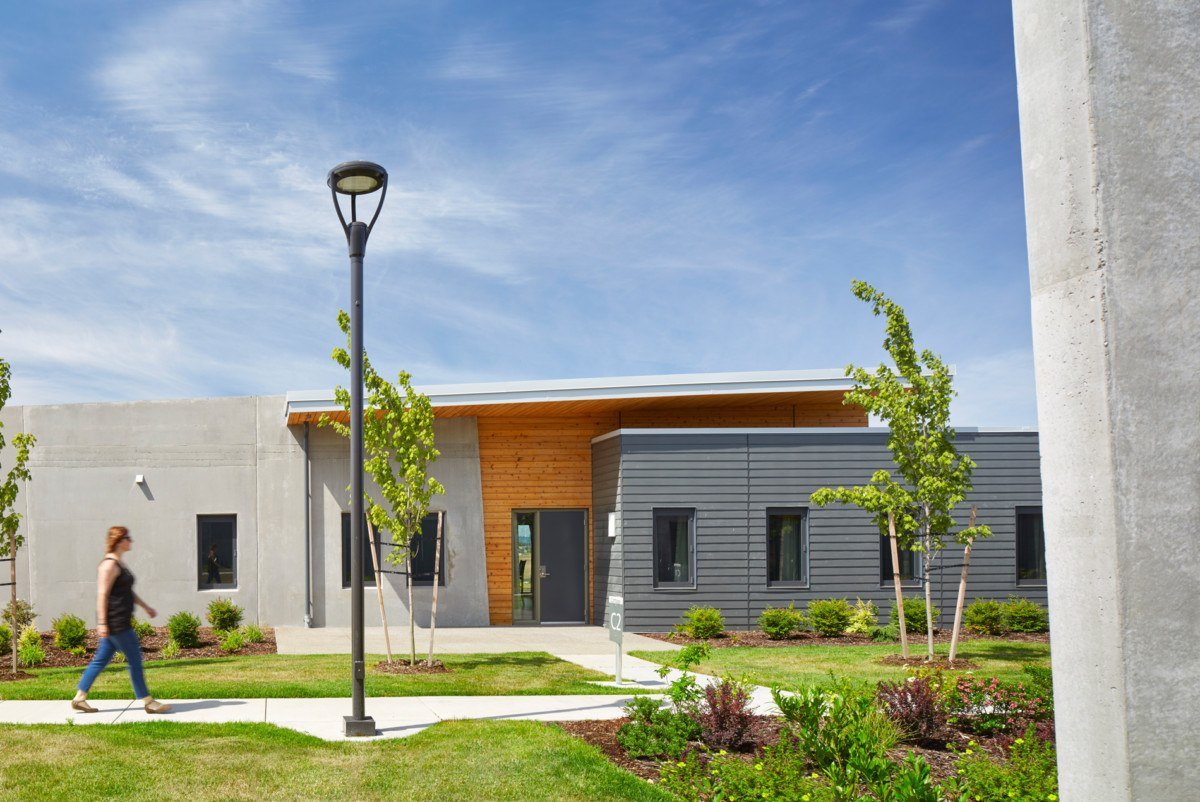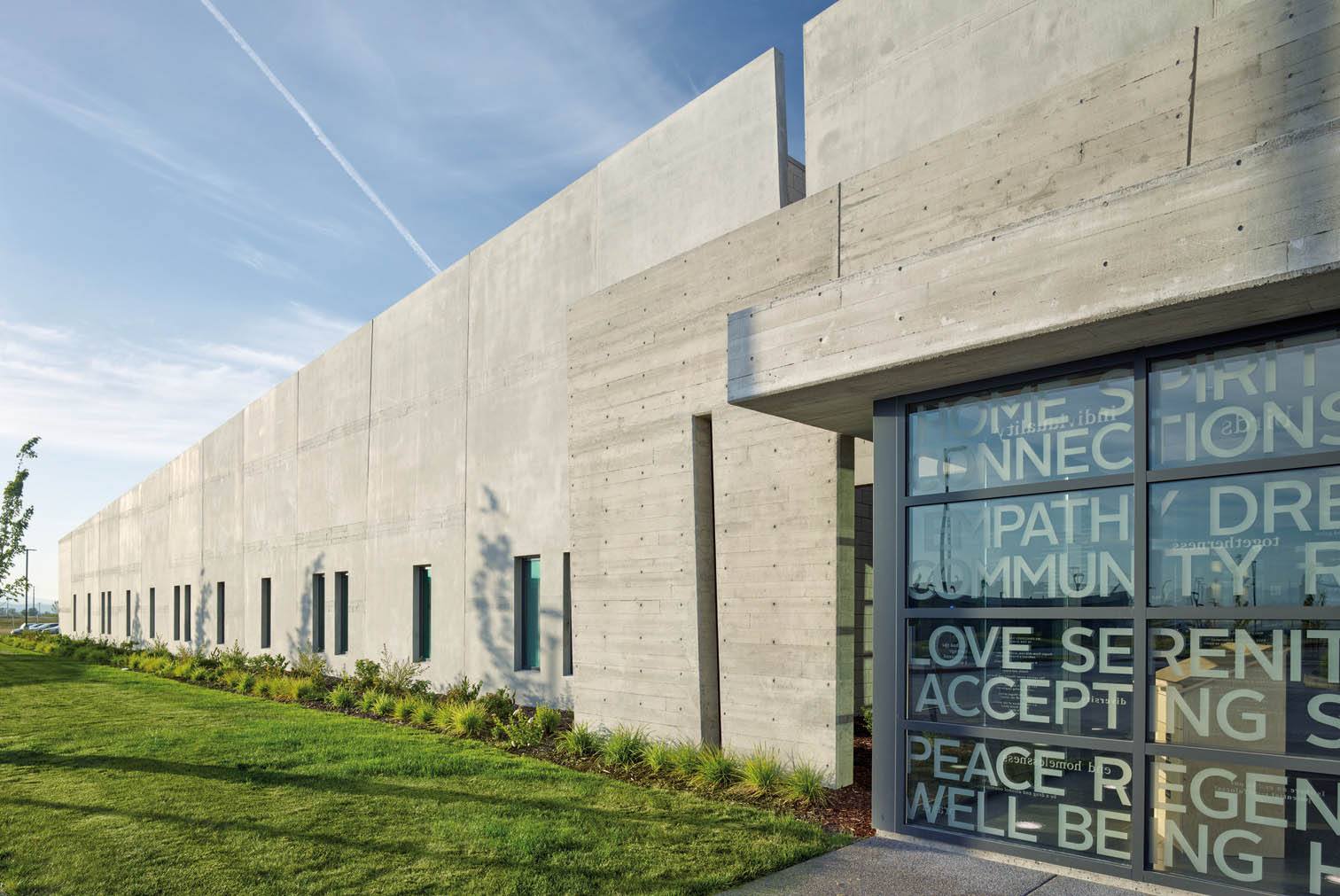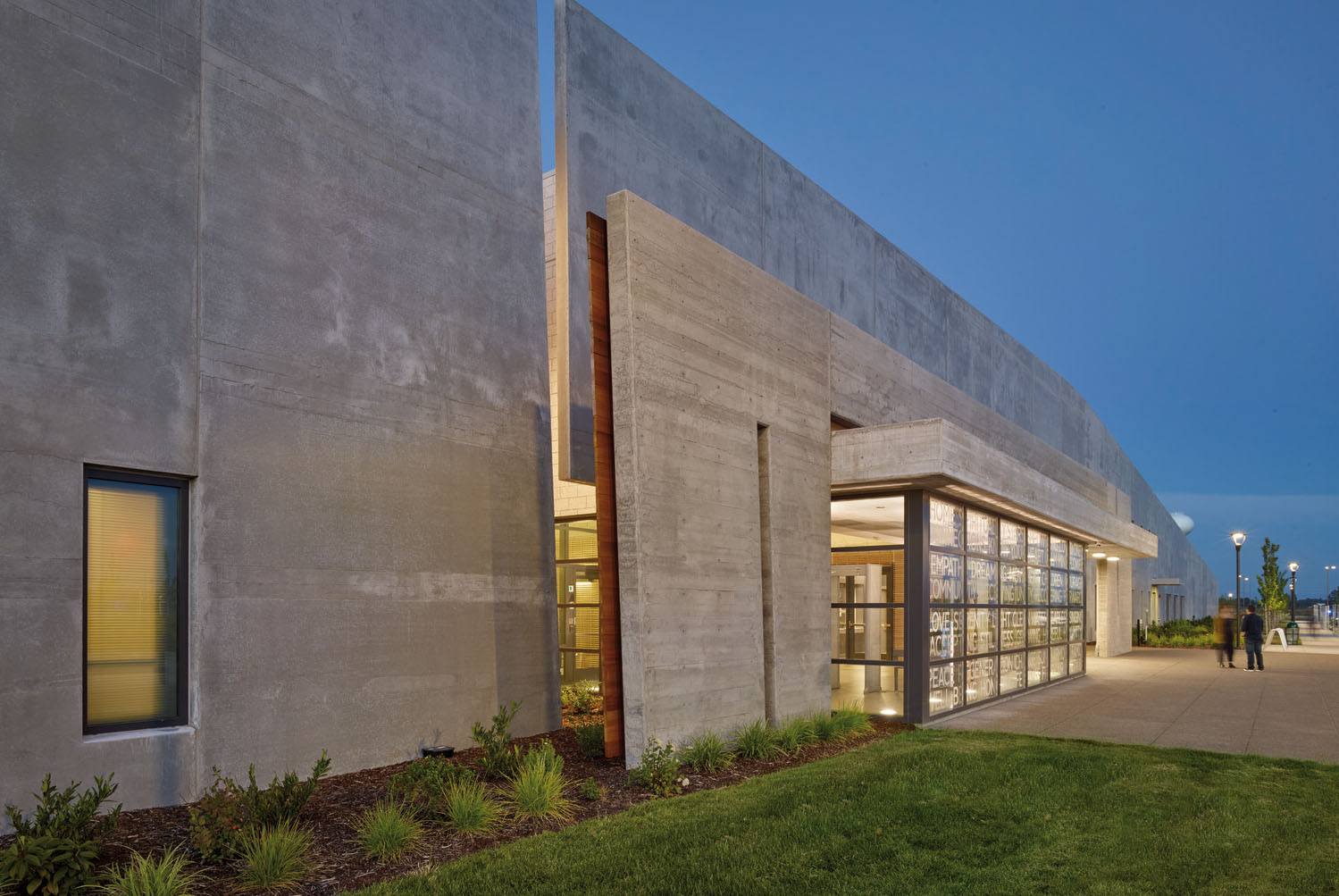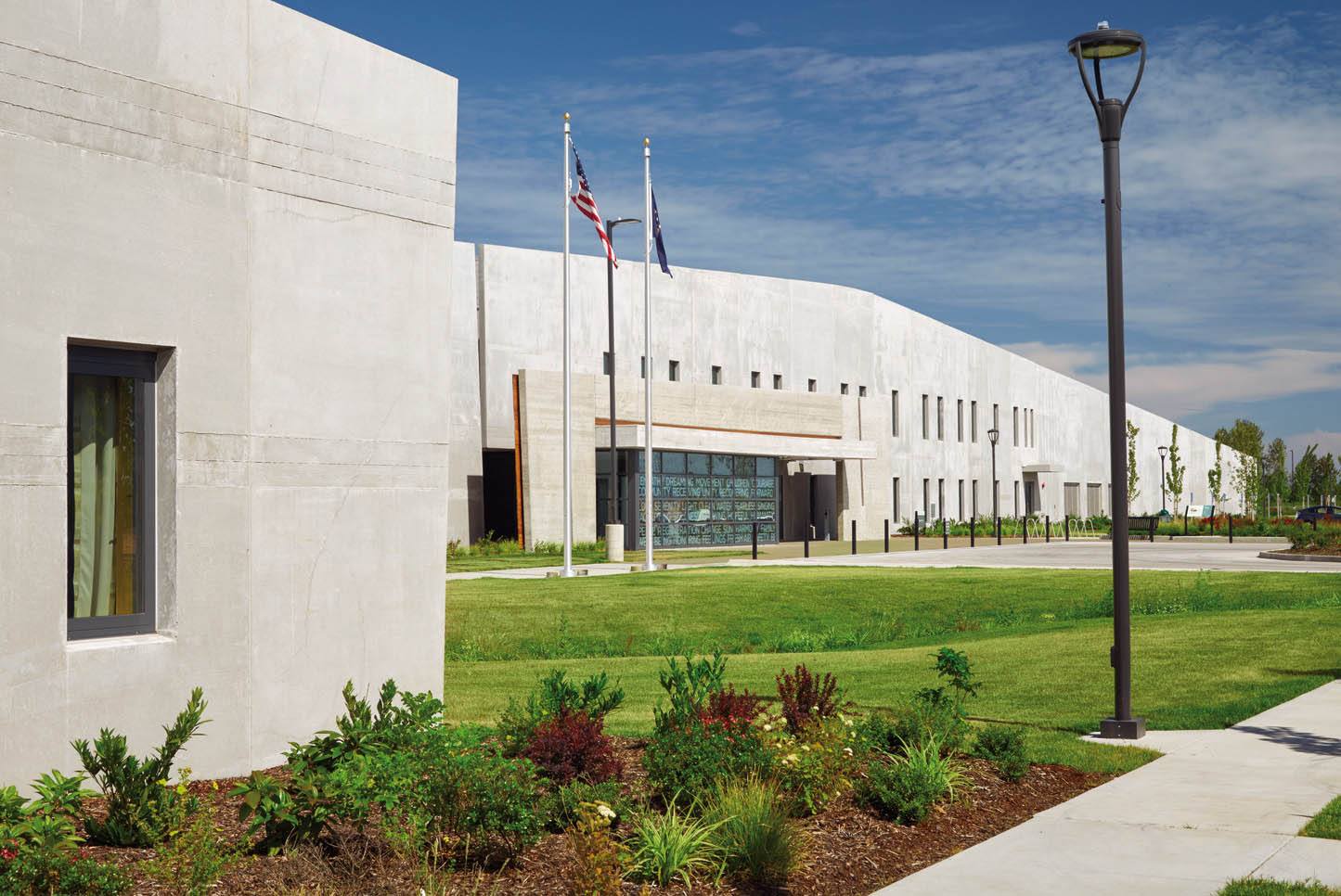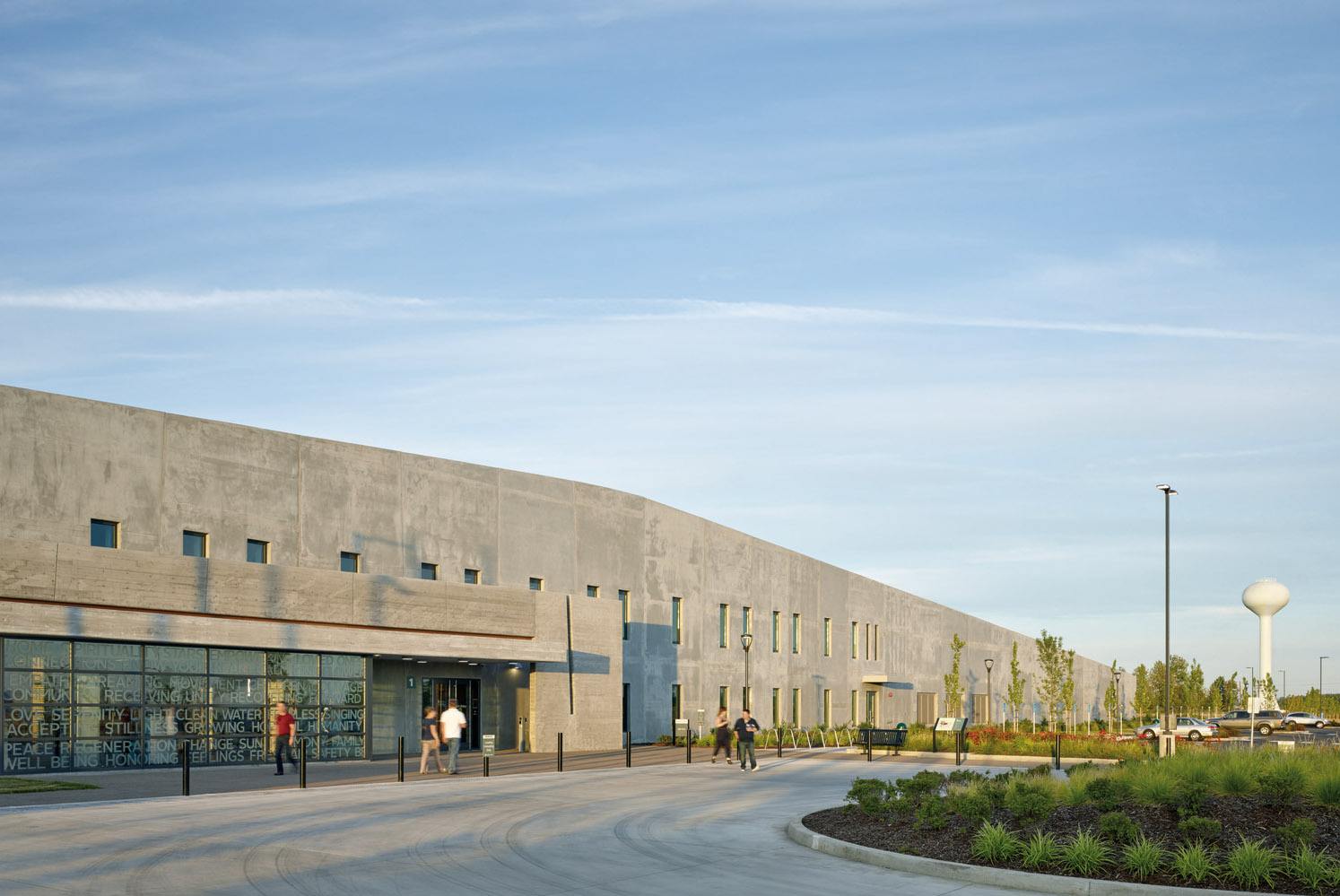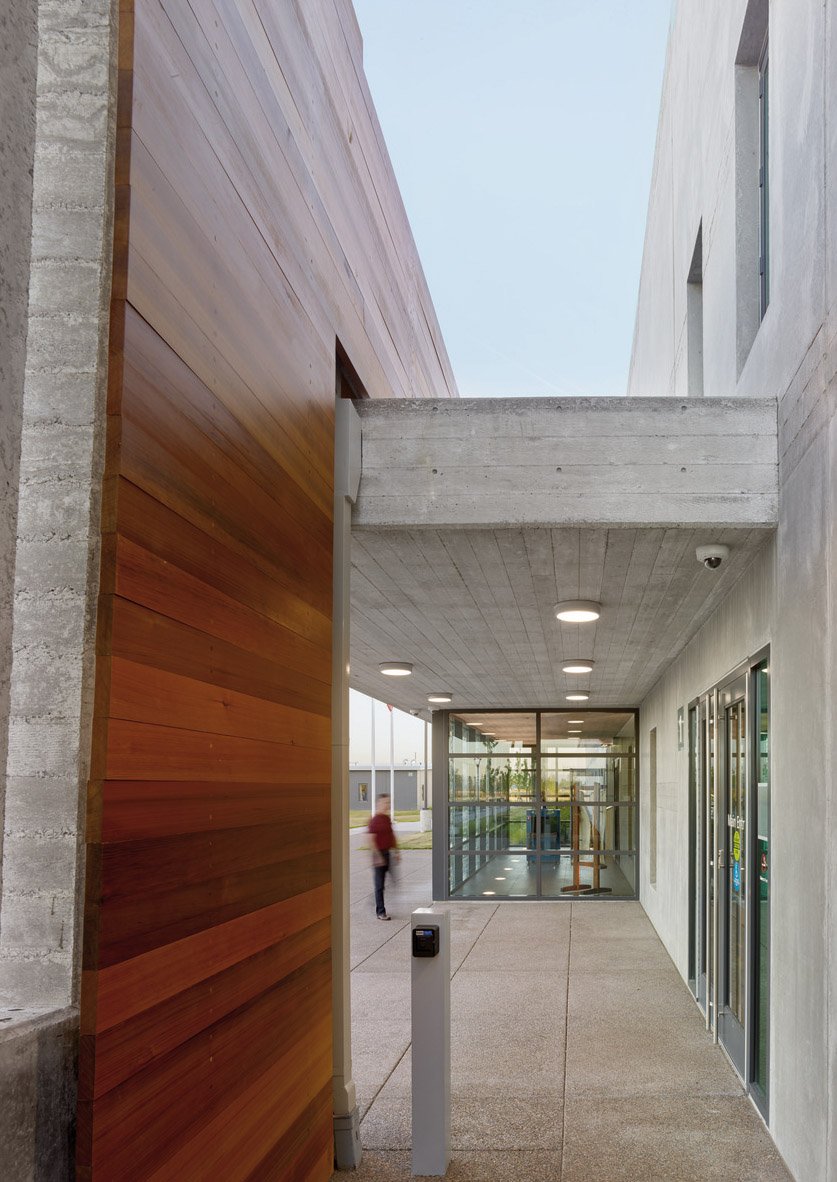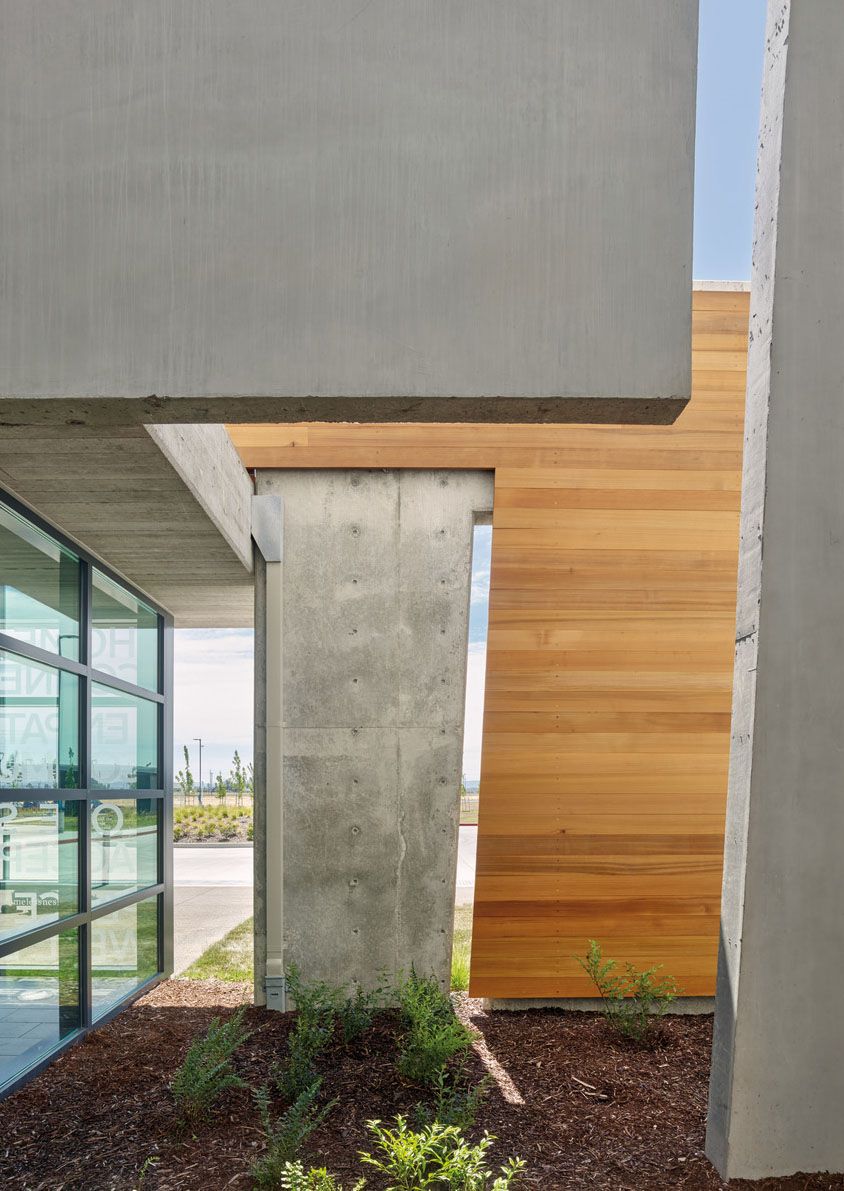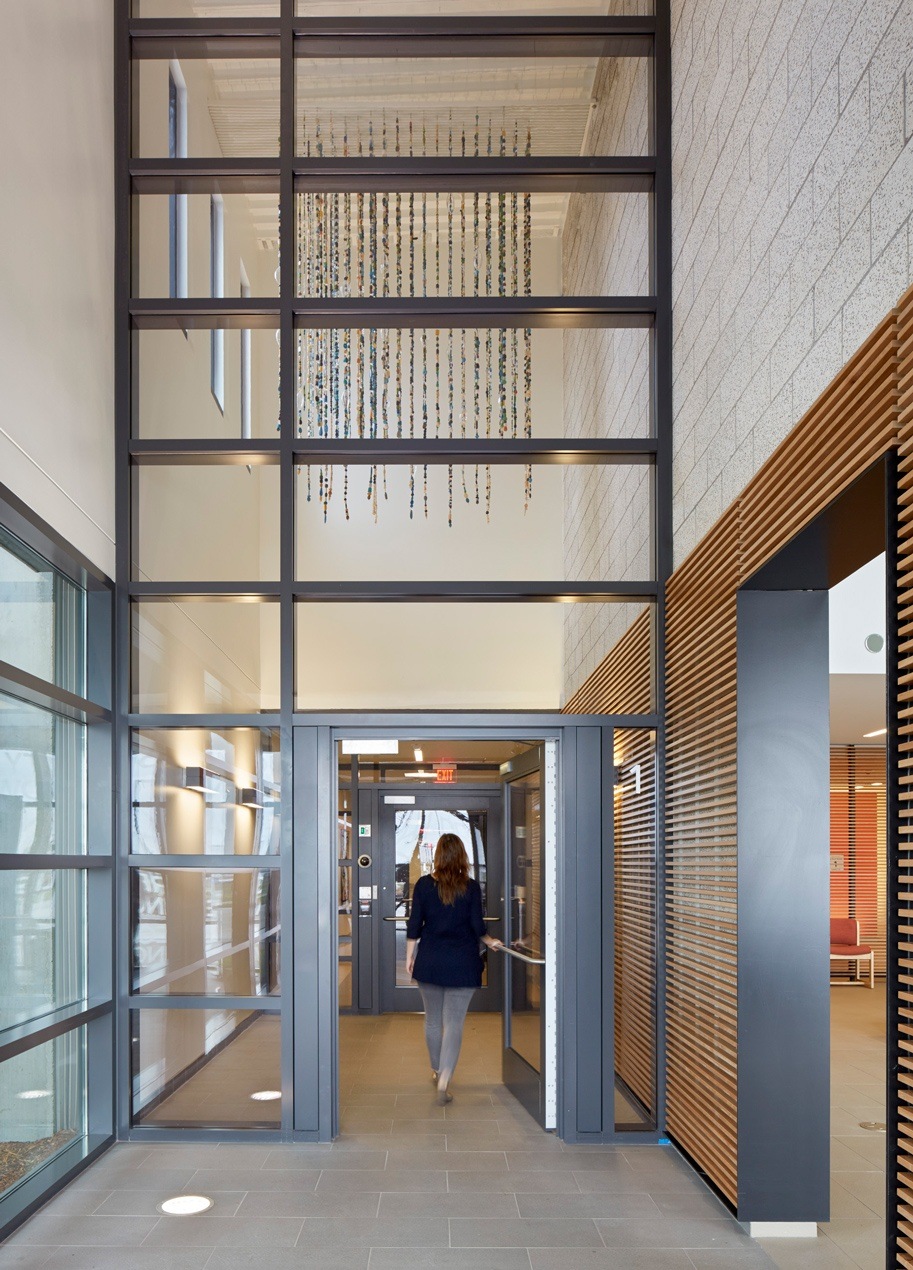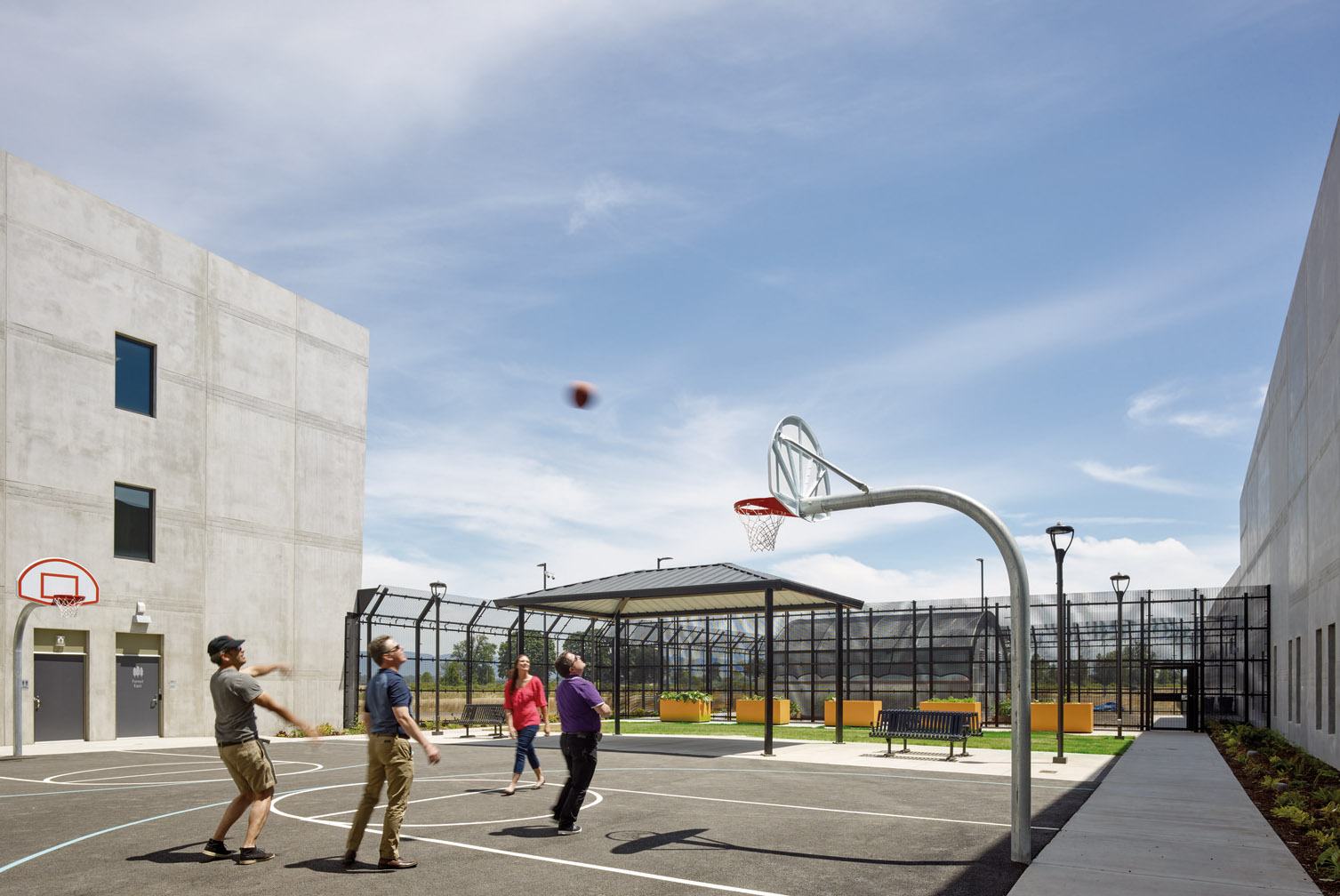As Oregon’s largest-ever capital project, the state hospital replacement program included the design and construction of two hospitals to house all psychiatric beds: one in Junction City and another in Salem.
Guiding the planning and design of each hospital was an emphasis on individualized treatment for successful long-term recovery. This includes transitioning from a unit-based care model to a treatment mall concept focused on recovery. The design supports healing, recovery and community reintegration. The team involved stakeholders including mental health advocacy groups, historic preservationists, neighborhood associations and concerned citizens in the design process.
Oregon State Hospital in Junction City
Set among agricultural pastures on greenfield land, the new 174-bed Oregon State Hospital in Junction City embraces the local landscape and nature’s restorative power. Two internal courtyards provide access to daylight and outdoor views, enhancing the healing environment while reducing the need for artificial lighting.
The lobby incorporates natural hues and materials including a deep red wall, muted ceramic tile floors and delicate wood panels along the walls for warmth and acoustics. A local artist created a 30-foot by 10-foot etched glass entry window featuring inspirational poems, statements and memories gathered through patient interviews. Soft colors in the residents’ areas create a calming environment.
A Model for Sustainable, Carbon-Neutral Healthcare Facilities
The project team used iterative energy modeling during design development to refine the building envelope, lighting, HVAC system and controls. This helped minimize energy use while creating a healing environment connected to nature. The project demonstrates that sustainable, energy-efficient facilities can be achieved within budget, even in states not eligible for incentives.
The sustainable design strategies started with a tight, high-performance envelope to minimize heating and cooling loads. The design optimized the window area to provide lots of daylighting while limiting heat gain.
Renewable energy systems include solar thermal for hot water production and a photovoltaic array for electricity generation to help decarbonize operations.
Code variances allowed expanded temperature setpoints, demand-controlled ventilation and lighting in patient rooms to reduce energy use.
The HVAC system uses 100% geothermal heating and cooling via heat recovery chillers and an open loop well system, powered by hydroelectricity, to help minimize the carbon footprint. Architectural and systems load reduction strategies enabled the facility to fully leverage geoexchange to be carbon neutral in a cost-neutral manner. Chilled beams reduce floor-to-floor heights by downsizing ductwork. Select spaces like the gym employ night flushing or pre-cooling to reduce cooling loads.
As a result of the energy optimization, the building achieves an energy use intensity of 45 kBtu/sf/year, which is 69% lower than ASHRAE Standard 90.1-2010 and 81% lower than the median for commercial buildings in the Commercial Buildings Energy Consumption Survey (CBECS) national data.
The design showcases a commitment to carbon-neutral operations, serving as a model for sustainable healthcare facilities. The use of renewable energy sources, efficient energy use and a focus on a healing environment support the global need to decarbonize the healthcare sector.
HOK collaborated with Portland-based SRG on the design, with Affiliated Engineers providing MEP/IT design.
174 beds
